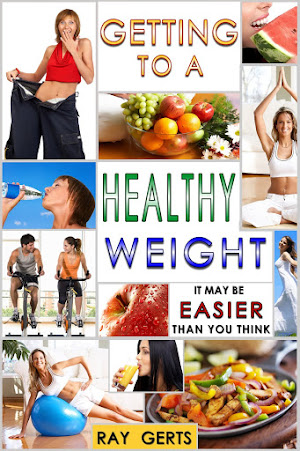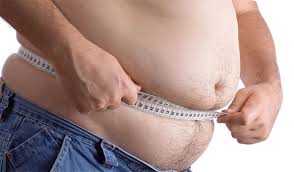YOU BET CHA!!, If you’re from Minnesota you have probably heard that phrase more than once. In this case, I’m not joking.
It’s not like the food purveyors actually add harmful chemicals because they don’t want to get sued, but the ingredients they buy can contain chemicals that can harm you over time. In processed foods, in order to keep the price low, manufacturers will substitute a natural ingredient like “sugar cane” for a manufactured product like “high fructose corn syrup” which can be bought for less money and won’t fluctuate in price because it’s man-made.
So, why does the FDA (Food And Drug Admin) allow anyone to do that? The answer is that the foods are made safe for human consumption because if that one item has something like High-fructose corn syrup which can harm people, the product doesn’t contain enough for anyone to get sick. But say you’re eating chips and crackers all day long, you can consume more chemicals than you should. Does that mean I’m going to drop dead? No, but over time you may be at risk for diseases like Cancer. Chemicals in food will be stored in cells and stay there and accumulate through your life and because we all have cancer cells in our body the chemicals we consume from the foods we eat will cause these cancer cells to grow until after many years these cancer cells are large enough to be detected.
I don’t mean to imply that you can get cancer from eating chips or crackers, but if you notice on the ingredient label that there are a lot of words that you can’t pronounce, those are chemicals. Chemicals that keep the product from getting stale or spoiling. Some also add flavor and some of them are substitutes for real food. Like onion-flavored crackers. There are no real onions used in making a cracker, only a flavor additive or a chemical that adds the flavor of the onion.
Below is a post from MedicineNet.com that explains
Eating fast food may expose a person to potentially harmful chemicals known as phthalates, a new study suggests.
People who consumed lots of fast food tended to have levels of phthalates in their urine that were 24 percent to 40 percent higher than people who rarely ate take-out fare, the researchers found.
“We found statistically significant associations between the amount of fast-food consumed in the prior 24 hours and the levels of two particular phthalates found in the body,” said study author Ami Zota. She is an assistant professor of environmental and occupational health at George Washington University’s Milken Institute School of Public Health, in Washington, D.C.
However, the study did not prove a cause-and-effect relationship between fast food and phthalate exposure.
The two phthalates in question are di(2-Ethylhexyl) phthalate (DEHP) and diisononyl phthalate (DiNP), Zota said. Industries use these chemicals to make plastics flexible, and they can be found in a wide array of food packaging and food-processing machinery.
The U.S. Congress has permanently banned the use of DEHP in children’s toys, baby bottles, and soothers, and it has temporarily banned DiNP for the same uses, according to the Environmental Working Group. The group is a nonprofit that focuses on environmental health issues.
The bans are based on concerns that phthalates can affect the development of the male reproductive system, Zota said. The chemicals also have been implicated in birth defects, childhood behavioral problems, and childhood chronic illnesses, such as asthma.
The two phthalates can get into fast food during the processing of the food, explained Shanna Swan. She is a professor of obstetrics, gynecology, and reproductive science with the department of preventive medicine at Mount Sinai’s Icahn School of Medicine, in New York City.
The chemicals also can leach into the food from the packaging in which it is stored, both prior to cooking and when it is served, Zota said.
Fast food even can pick up phthalates from the vinyl gloves that restaurant workers wear to prevent food poisoning, Zota added.
“To reduce exposure to phthalates, my recommendation always is to minimize exposure to processed foods, and the ultimate processed food platform is the fast-food restaurant,” Swan said. “They don’t use anything fresh.”
To see whether people who eat fast food have more phthalates in their systems, Zota and her colleagues reviewed data on nearly 8,900 people participating in a regular survey on health and nutrition conducted by the U.S. Centers for Disease Control and Prevention.
Researchers defined fast food as anything obtained from a restaurant without waiter or waitress service, or any type of pizza place. All carryout and delivery foods were also considered fast food.
People were considered heavy fast-food consumers if they obtained more than 35 percent of their daily calories from pre-made foods, Zota said.
Zota and her team found that the more fast food participants in the study ate, the higher their exposure to phthalates.
People with the highest consumption of fast food had 24 percent higher levels of the breakdown product for DEHP in their urine sample. Those same fast-food lovers had nearly 40 percent higher levels of DiNP byproducts in their urine compared to people who reported no fast food in the 24 hours prior to the testing.
Grains and meats most significantly contributed to phthalate exposure, the study reported. Grains include a wide variety of items, such as bread, cake, pizza, burritos, rice dishes, and noodles, products made from enriched or processed wheat flour, Zota explained.
Look for my podcasts on anchor.fm, or the podcast app on your cell phone. Search “howbaddoyouwanttoloseweight".
If you really want to lose your body fat then look for my e-books at the websites listed below. You’ll get information on Healthy eating, exercise, and diet. Instead of spending hours on the internet reading dozens of posts, you can save time by picking up one of my e-books.
There are two e-books. “How Bad Do You Want To Lose Weight?” is available at all the online bookstores selling for $3.99. Go to any of the websites below and search the title to find my e-book. This book gives you all you need to lose weight without spending money on gym memberships, diet plans, or meal plans. Look for my book. at Amazon.com, B&N.com, iBooks, Kobo.com, Scribd.com, or Gardner Books in the U.K.
My new e-book is available on Smashwords.com, just type “getting to a Healthy Weight” in the search box at the top of the home page.






